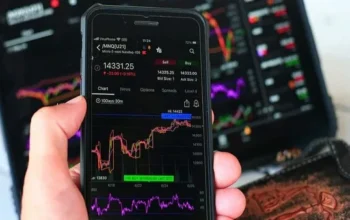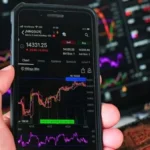Margin calls and stop-out levels are critical concepts in forex trading that every trader needs to understand. These mechanisms are designed to protect both the trader and the Forex broker from excessive losses, particularly in volatile market conditions. While they may seem intimidating, knowing how they work can help you manage your risk effectively and avoid unpleasant surprises. Here’s an in-depth look at margin calls, stop-out levels, and their role in forex trading.
What Is Margin in Forex Trading?
Margin is the amount of money a trader must deposit to open and maintain a leveraged position. It acts as collateral to cover potential losses and allows traders to control larger positions with smaller amounts of capital. For example, with a leverage ratio of 1:100, a $1,000 margin allows you to control a $100,000 position.
While leverage increases potential profits, it also amplifies potential losses. This is where margin calls and stop-out levels come into play.
What Is a Margin Call?
A margin call occurs when your account equity (the value of your account, including unrealized profits or losses) falls below the required margin level set by your broker. When this happens, your broker may ask you to deposit additional funds to maintain your open positions.
Example:
If you have a $1,000 account and open a position requiring $500 margin, your equity must stay above the maintenance margin level (e.g., 50% of the required margin, or $250). If your equity falls below this threshold due to market losses, you’ll receive a margin call.
How Brokers Handle Margin Calls
- Notification: Most brokers send an alert when your account approaches the margin call level, giving you a chance to add funds or close positions.
- Manual Action: You can deposit more money or reduce your exposure by closing some trades to restore the margin level.
What Is a Stop-Out Level?
The stop-out level is the point at which the Forex broker automatically closes your positions to prevent further losses when your account equity falls below a specific percentage of the required margin.
Example:
If your broker’s stop-out level is set at 20%, and your equity drops below 20% of the required margin, the broker will start closing your positions, beginning with the largest loss, to free up margin and protect your account from going negative.
Key Differences Between Margin Call and Stop-Out
- Margin Call: A warning or alert to add funds or close positions to meet the margin requirements.
- Stop-Out: An automatic action by the broker to close positions when equity falls below the stop-out level.
How Brokers Set Margin Call and Stop-Out Levels
Different brokers set different thresholds for margin calls and stop-outs. For example:
- Margin Call: Typically set at 100% of the required margin.
- Stop-Out: Commonly set between 20% and 50% of the required margin.
These levels depend on the broker’s risk management policies and regulatory requirements.
Why Margin Calls and Stop-Outs Are Important
- For Traders: These mechanisms act as a safeguard, preventing your account from going into a negative balance and protecting your capital from extreme losses.
- For Brokers: Margin calls and stop-outs protect brokers from incurring losses on behalf of their clients, ensuring the trading system remains sustainable.
Understanding margin calls and stop-out levels is essential for managing risk in forex trading. These mechanisms are not just safety measures—they’re integral to maintaining a healthy trading account. By using leverage wisely, keeping a close eye on your margin levels, and employing proper risk management strategies, you can minimize the chances of triggering a margin call or stop-out, allowing you to trade confidently and sustainably. Always choose a Forex broker that provides clear margin policies and reliable support to guide you through these critical aspects of forex trading.









